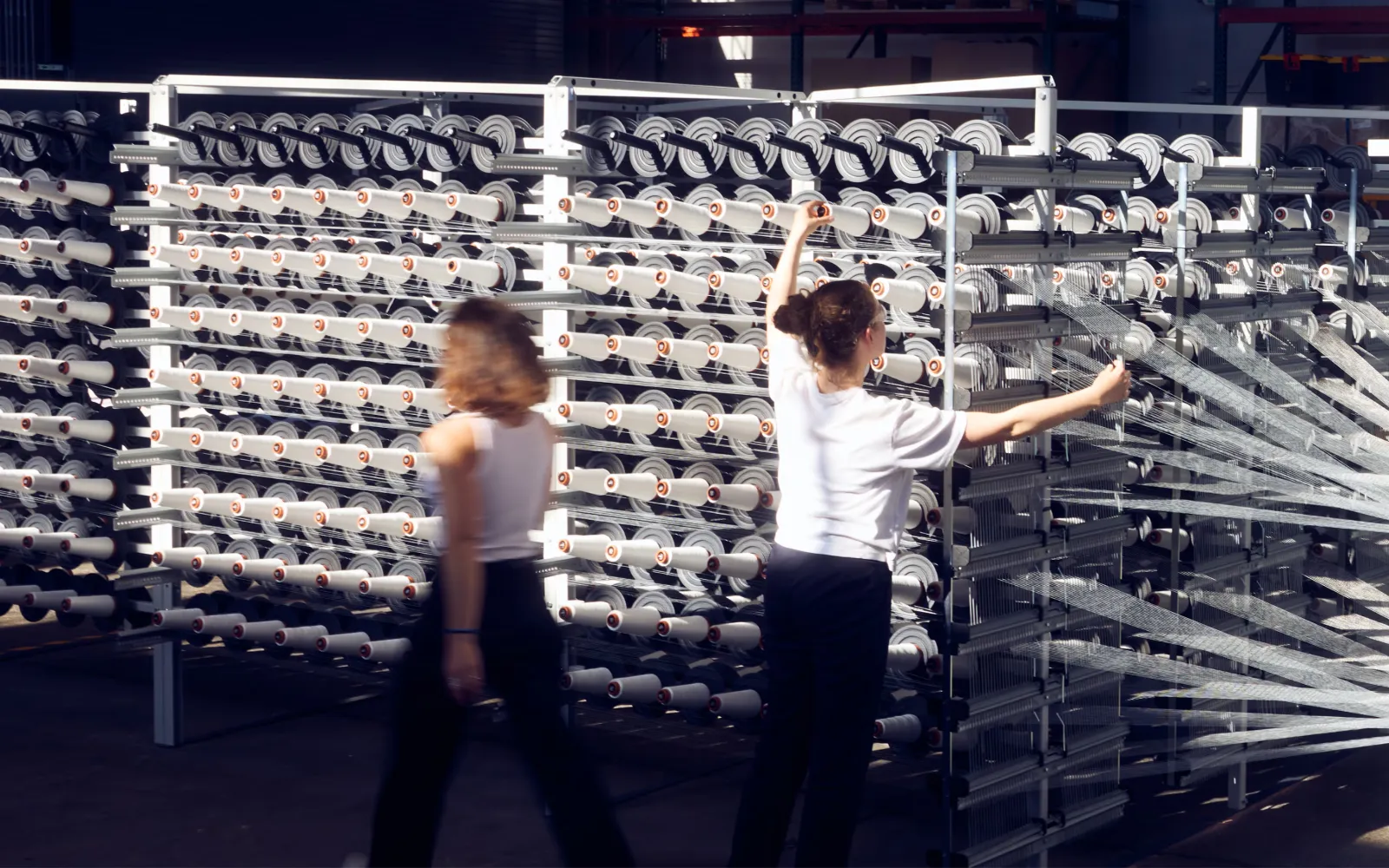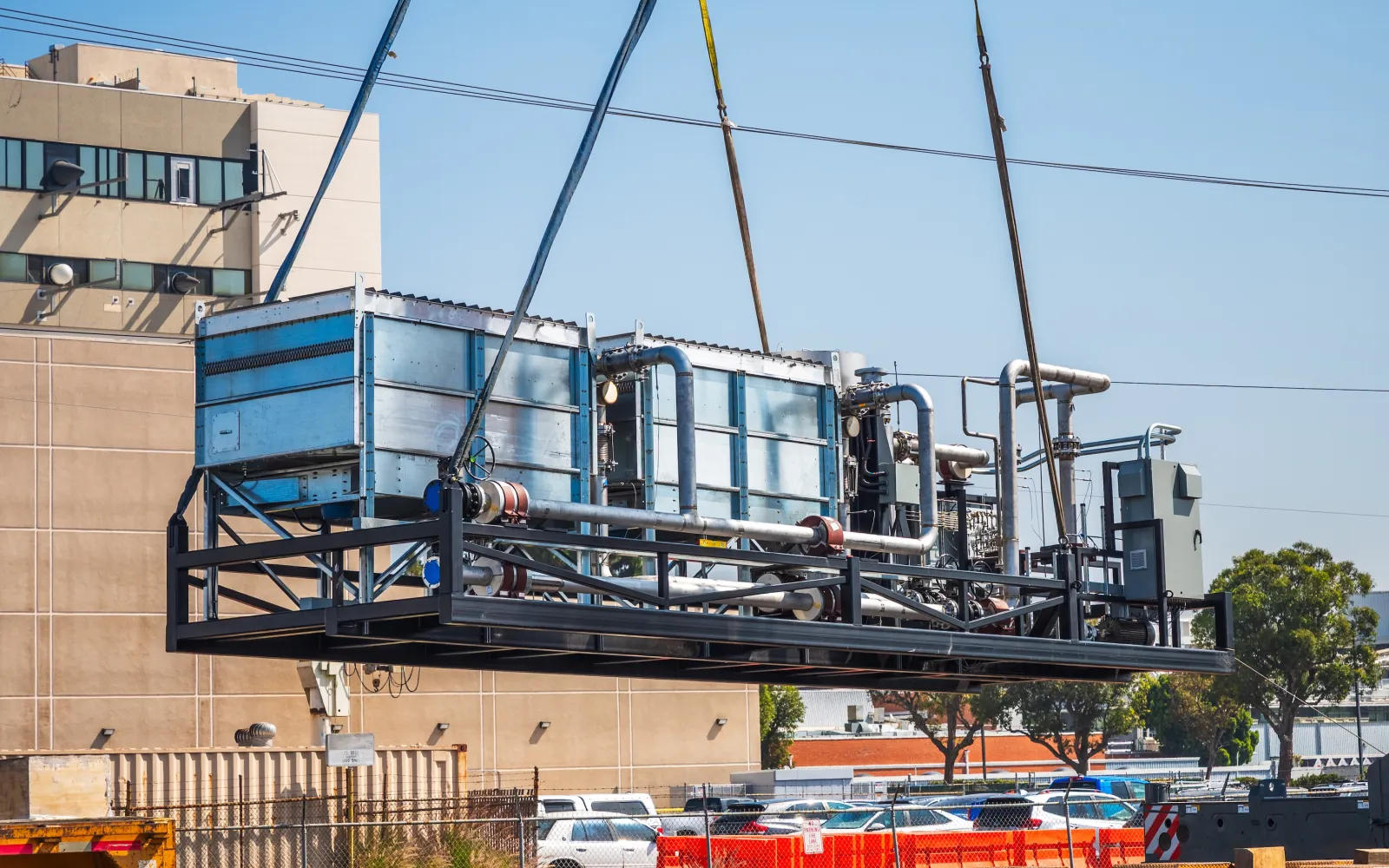

Unspun
Using 3D weaving to reduce the fashion industry’s climate impact
The 2025 edition of the DCVC Deep Tech Opportunities Report, released in June, explains the global challenges we see as the most critical and the possible solutions we hope to advance through our investing. This is the report’s first full chapter.
The stockpiling of goods like appliances and clothing is what enables the cornucopia of instant choice to which we’ve become accustomed in the internet era. But in aggregate, an enormous amount of energy and raw materials — in the form of cloth, plastic, metal, motors, circuit boards, and the like — is locked up in these goods. What if there were a lower-impact way to provide the same flexibility?
The idea of on-demand manufacturing plants positioned close to the end consumer, a concept decades old, is no longer a fantasy. It’s becoming real at companies like DCVC-backed Unspun—and it’s just one of the ways entrepreneurs are rethinking how industrial production and supply chains should work.
The mission at Unspun is to reduce material and transportation waste in the fashion industry, using automated 3D circular weaving technology that can create woven garments on demand in microfactories. At its R&D facility in Emeryville, Calif., the company’s prototype weaving machine pulls in thousands of individual yarns to create a pair of pants in 20 minutes — four times the speed of traditional methods. Now the company is focused on scaling its technology to meet growing demand from customers — including major retailers like Walmart and Decathlon — as well its garment manufacturing partners.
One of Unspun’s goals is to make fashionable clothes while sidestepping the textile waste endemic to the fashion industry. Traditionally, long production and transportation timelines have meant that retailers must order items a year or more before they reach stores. Customers’ tastes change faster than that, resulting in a constant mismatch between supply and demand — and leaving huge amounts of inventory as unsold overstock, a major contributor to the industry’s large carbon footprint. Unspun’s spinning machines allow brands and retailers to leap straight from yarn to the finished product and deliver items to stores in days. That enables stores to order only what they need, since they can easily restock styles and sizes that sell out.
“By delaying the configuration of materials — making products closer to the end customer, growing food closer to the market, weaving clothes closer to the retailer, manufacturing appliances in the region where they’ll be purchased — you are only moving the molecules that people are actually using,” says DCVC general partner Milo Werner. “You’re eliminating waste throughout the whole supply chain.”
Fulfil is another exciting example of a DCVC-backed company that’s tackling waste by rethinking the supply chain. The United Nations says that in 2022, 19 percent of food produced for consumers was wasted at the retail, food service, and household level, and another 13 percent was lost in the supply chain. That waste not only costs a billion meals a day, but also generates 10 percent of global greenhouse gas emissions. Fulfil builds small fulfillment warehouses for online grocery orders where R2-D2 – like shop bots pick and pack items for delivery by services such as DoorDash. Its inventory management software lets store owners track which perishable items are approaching their expiration dates and use dynamic pricing to ensure they’re sold before they must be discarded. If Fulfil automated 5 percent of U.S. grocery shopping, it would reduce food waste by 800 million pounds per year, says CEO Mir Aamir.
Another business in need of innovation and reshoring is the production of rare-earth elements and the other minerals we need to build everything from electric vehicles to consumer electronics, jet engines, and defense-critical technologies. When China imposed export curbs on gallium in 2023, prices for this silvery metal — used in semiconductors and photovoltaic panels — roughly doubled. Antimony, germanium, and other strategic resources could be subject to similar swings in price and supply, at China’s whim.
Alta Resource Technologies, with seed funding from DCVC. is tackling this problem at the very beginning: the extraction stage. The company uses computationally optimized proteins to pull high-purity rare-earth elements from low-grade sources available domestically, such as e‑waste. The process bolsters the domestic supply chain for critical minerals while at the same time sidestepping traditional mining and refining, and its high environmental toll.
China’s control over critical minerals mining extends to magnesium, a strong and light structural metal that could be critical to building new fleets of lightweight vehicles. To help with this problem, DCVC led a seed funding round for Tidal Metals, which is developing a way to extract the metal from its most abundant source: ocean water. The company’s patented temperature-swing adsorption vapor pump uses a process called fractional crystallization to pull magnesium out of seawater or brines in the form of anhydrous magnesium chloride, which can then be separated using electrolysis into chlorine and magnesium metal. “Wouldn’t it be great if we could get resources out of wastewater or seawater and not have to use big earth-moving devices to dig out ore and then refine that ore using very energy-intensive thermal processes?” asks DCVC operating partner Earl Jones. “Tidal Metals leans right into all that.”
Reshoring an industrial process that’s wasteful and polluting does no one any good. The manufacturing and logistics breakthroughs that will create tomorrow’s high-growth companies, we believe, are those that are cheaper, cleaner, and more energy-efficient than traditional methods.
Using 3D weaving to reduce the fashion industry’s climate impact
Automating online grocery fulfillment to lower costs
Using advanced biochemistry to create a secure supply of critical minerals from waste and other low-grade sources
Developing a carbon-neutral, environmentally friendly way to extract magnesium from seawater








